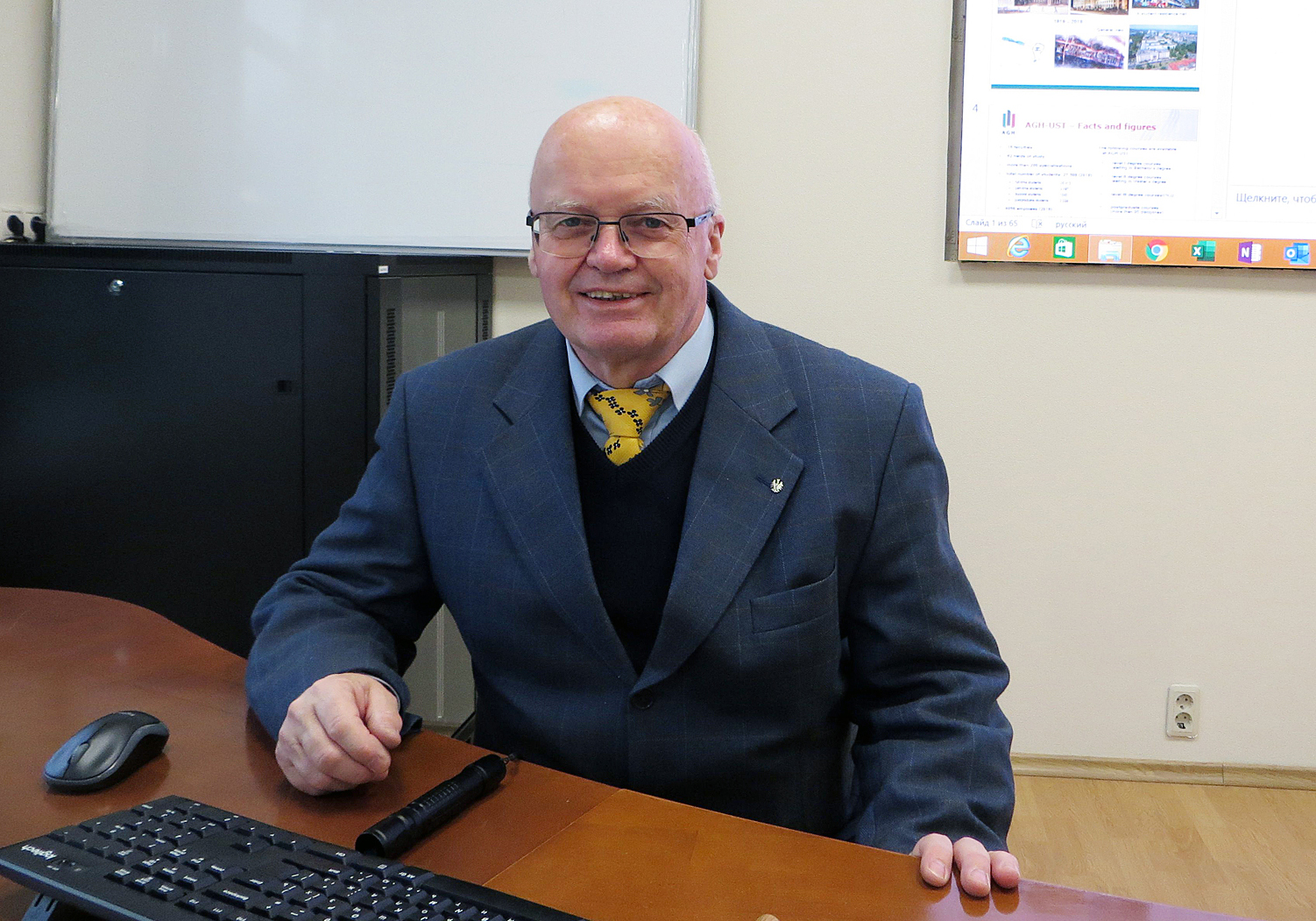Seminar at the end of the year: physics and metallurgy unite
News, 27 December 2019
On 12 December, a joint laboratory seminar was held in FLNP JINR at which Professor of the AGH University of Science and Technology (Krakow, Poland) Stanislav Dymek made a report “Analysis of physical phenomena occurring in selected metallic alloys subjected to various metallurgical processes”. Before the seminar started, he gave a small interview to the journalist of the JINR Weekly Newspaper.
“We cooperate with the Joint Institute in the fields of neutron diffraction as far as we do not have opportunities for conducting such research in Poland. And Dubna researchers do not have such electron microscopes and other equipment that we have. So, we have decided to join efforts in trying to solve some tasks. We generally study metals and alloys, surface junctions and their transformations. I believe that our cooperation will expand, and I have come here to encourage it.”
“Are you for the first time at JINR?”
“Yes, I am. But my colleagues have visited FLNP for several times. We are trying to strengthen our interaction, and I think it will be beneficial for both parties as far as we need neutron diffraction and our equipment and accumulated expertise in material characterization may be useful to FLNP specialists.”
“Are works you conduct at your university only for industrial tasks or is it fundamental research?”
“It is possible to say that we have both theoretical, fundamental research and a share of industrial tasks. In fact, we study special kinds of welding carried out in a solid state, we work with aluminium alloys. These are practical issues, but some fascinating physical phenomena interesting to physicists may occur in the process of welding. We use some physical devices, for example, the positron annihilation spectrometer to study weld beads. The positron annihilation spectrometer and welding do not seem to be interrelated but we find opportunities to obtain interesting results and create fascinating science.”
Stanislav started his speech with information about his university and wonderful views of an ancient city Krakow. The AGH University of Science and Technology is one of the largest technical universities of Poland. This year, it celebrated its 100 anniversary. The University educates more than 27 thousands of students; more than 1846 researchers and 276 professors work there. Stanislav works at the Faculty of Metals Engineering and Industrial Computer Science established in 1922. It has a wide range of research equipment: scanning and transmission electron microscopes, atomic microscope, pulsed lasers, x-ray diffractometer and other facilities. This equipment is used for two major research fields: metallic alloys he spoke about using the example of the Ni-Mo-Cr system and its properties at various temperatures, and friction stir welding in the process of which various physical phenomena take place.
The seminar evoked vivid interest among FLNP employees.
Olga Tarantina, JINR Weekly Newspaper
